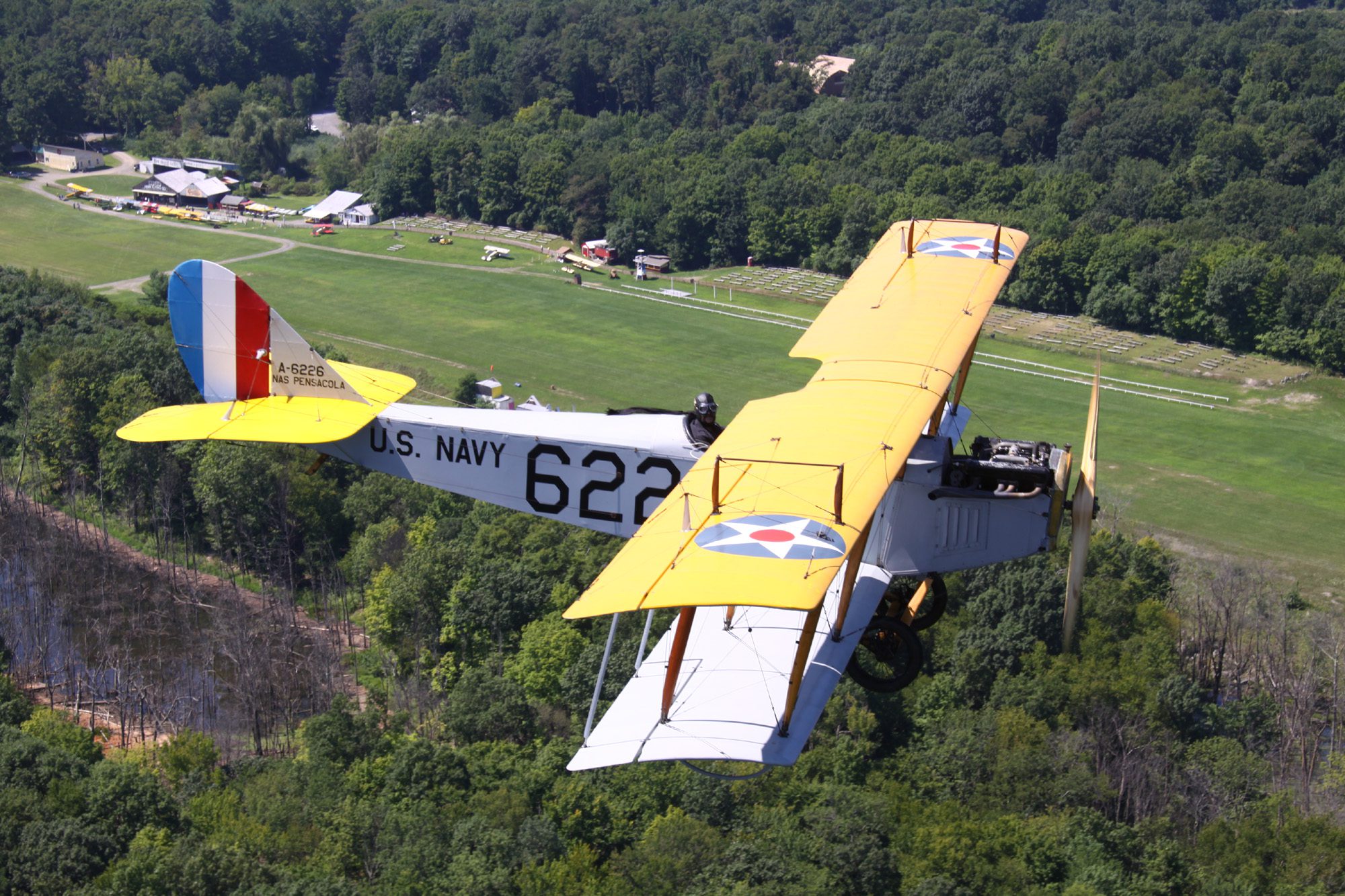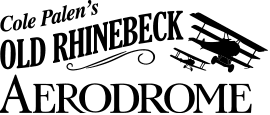
Curtiss JN-4H
- : United States
- : 1917
- : Hispano-Suiza
- 180
- 43 ' 7"
- 75 mph (120 km/hr)
- 1920 lbs (871 kg)
- : Active
- : Original
Pioneer American Aviator Glenn Curtiss commissioned former Sopwith designer Benjamin Thomas to develop his line of JN trainers. As no American fighter aircraft saw combat, pilots trained on the thousands of “Jennys” built in the US and Canada were our contribution to WWI in the air. Jenny was rugged and reasonably forgiving to fly. After the War, surplus Jennys were available, some brand new, for little money. Pilots returning from combat and a new crop of aviators, including Charles Lindbergh, barnstormed them across the country and introduced flying to the American public. Jenny’s were used in early airmail flight experiments. Most carried the 90 HP, Curtiss OX-5 engine. Some, like our example, were fitted with Hispano Suiza engines which significantly improve performance.
In January 1957 Cole Palen received (by rail) 19 pieces of a wrecked aircraft from C.W. Adams, Jr. of Winter Haven, FL. It had been advertised as a Standard J-1 but turned out to be an engine-less “Hisso” Curtiss JN-4H “Jenny,” with previous history available. Some of the missing original parts (eventually) turned up, and a 180 HP Hispano Suiza Model E was obtained from the Franklin Institute in Philadelphia, PA. Restoration began in 1967 and the aircraft was rebuilt from the original parts and sections from other JN-4s. it is one of only three Hisso powered Jennys flying in the world today. After flying regularly at the Aerodrome from 1969 through 1998, it was totally restored by master mechanic Ken Cassens. It returned to the sky in 2001.
Click for more information about the Curtiss JN-4H
